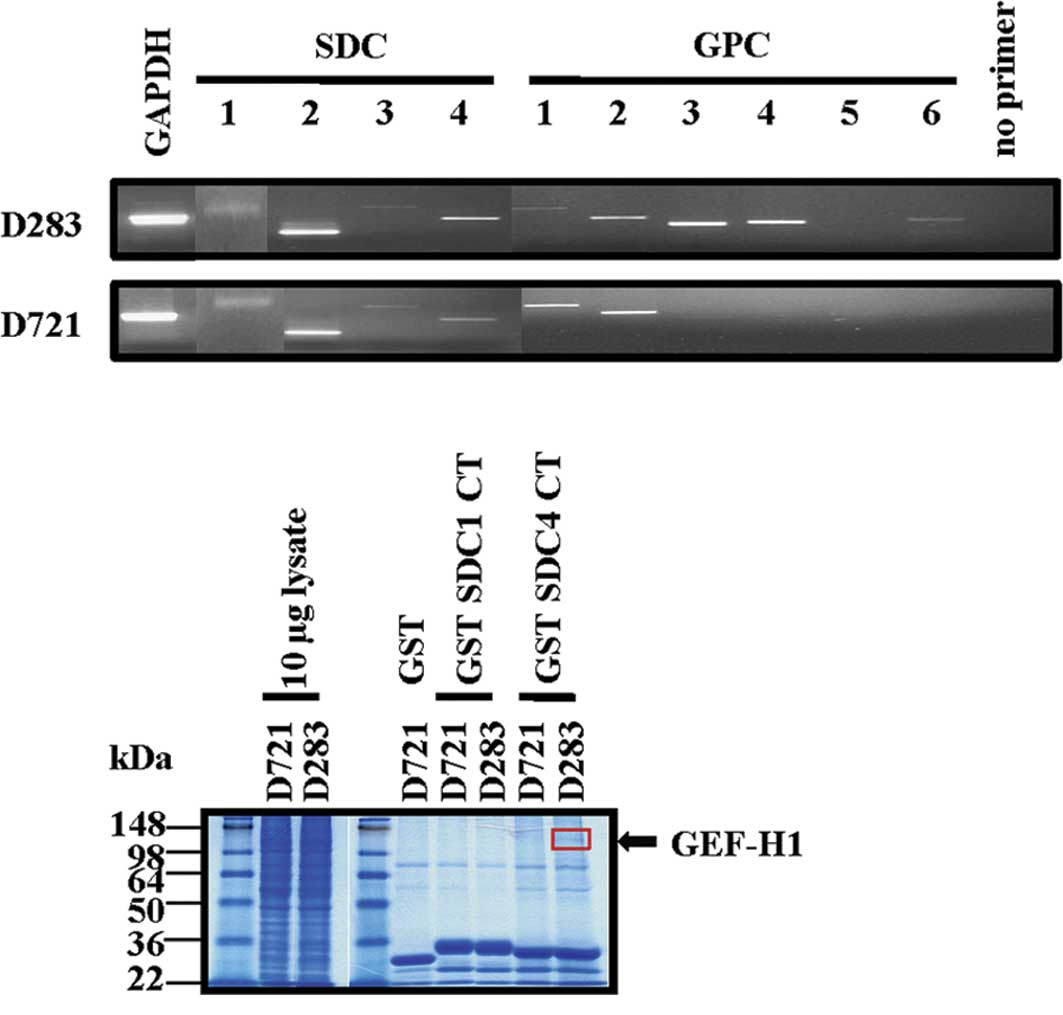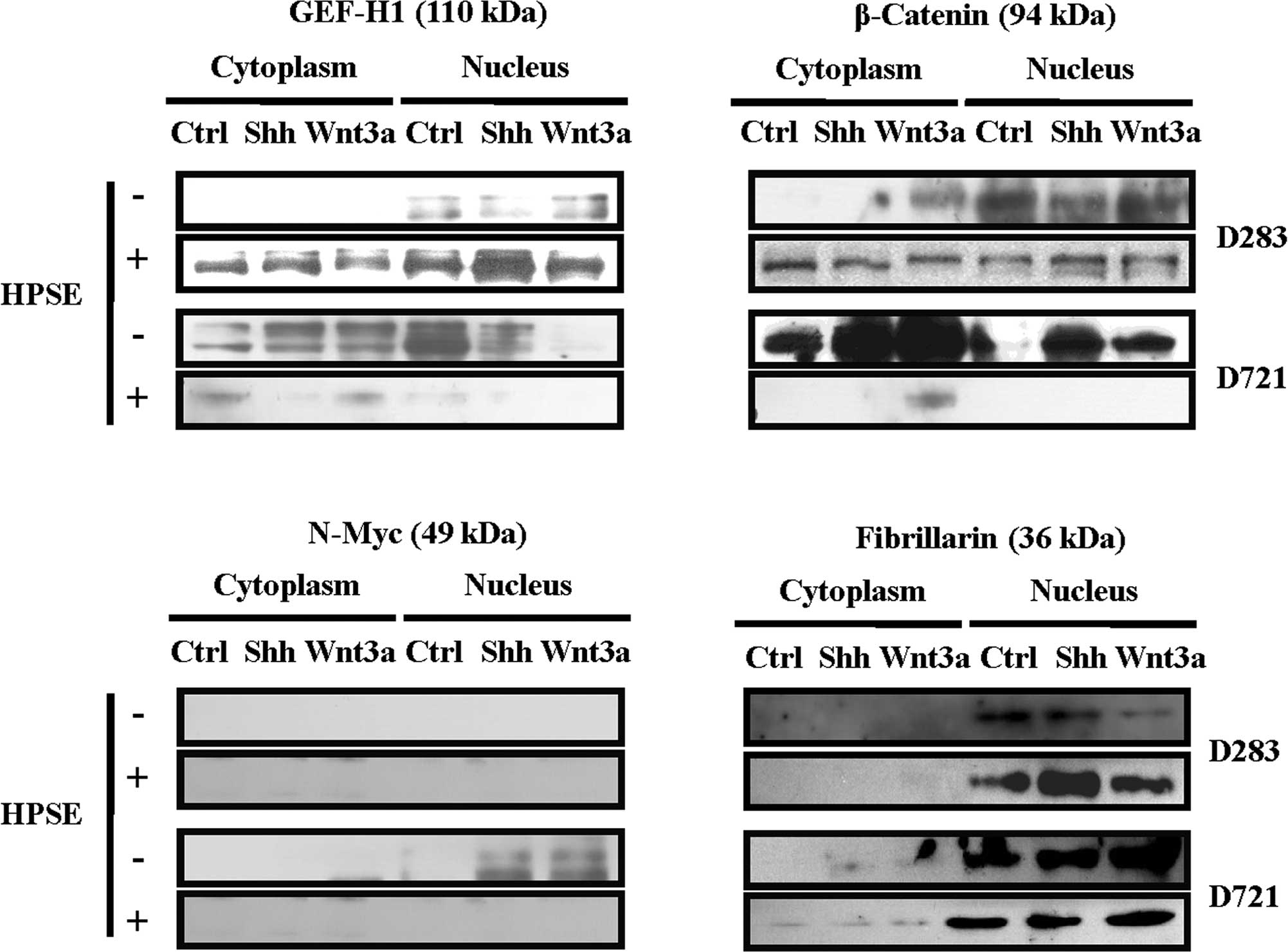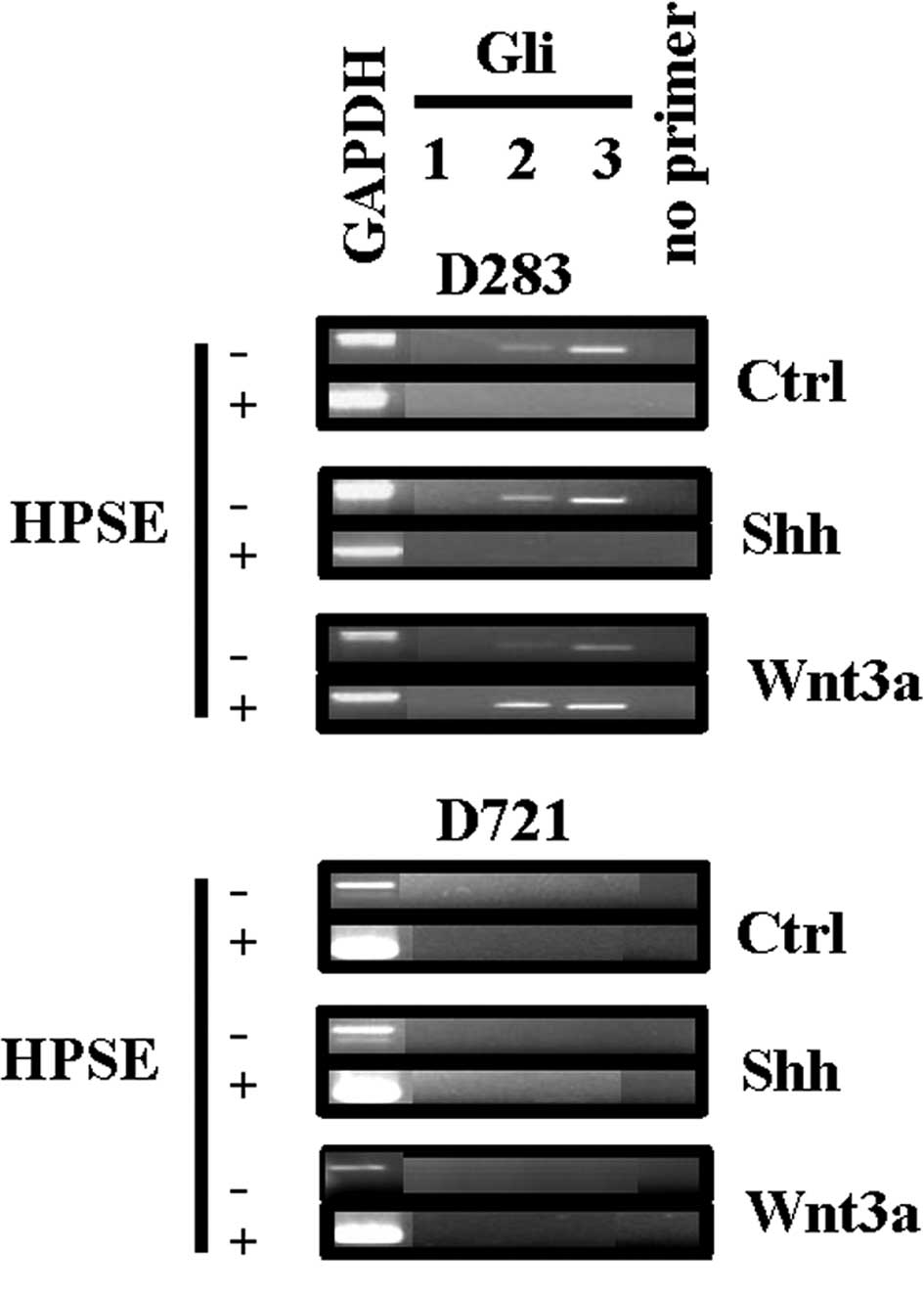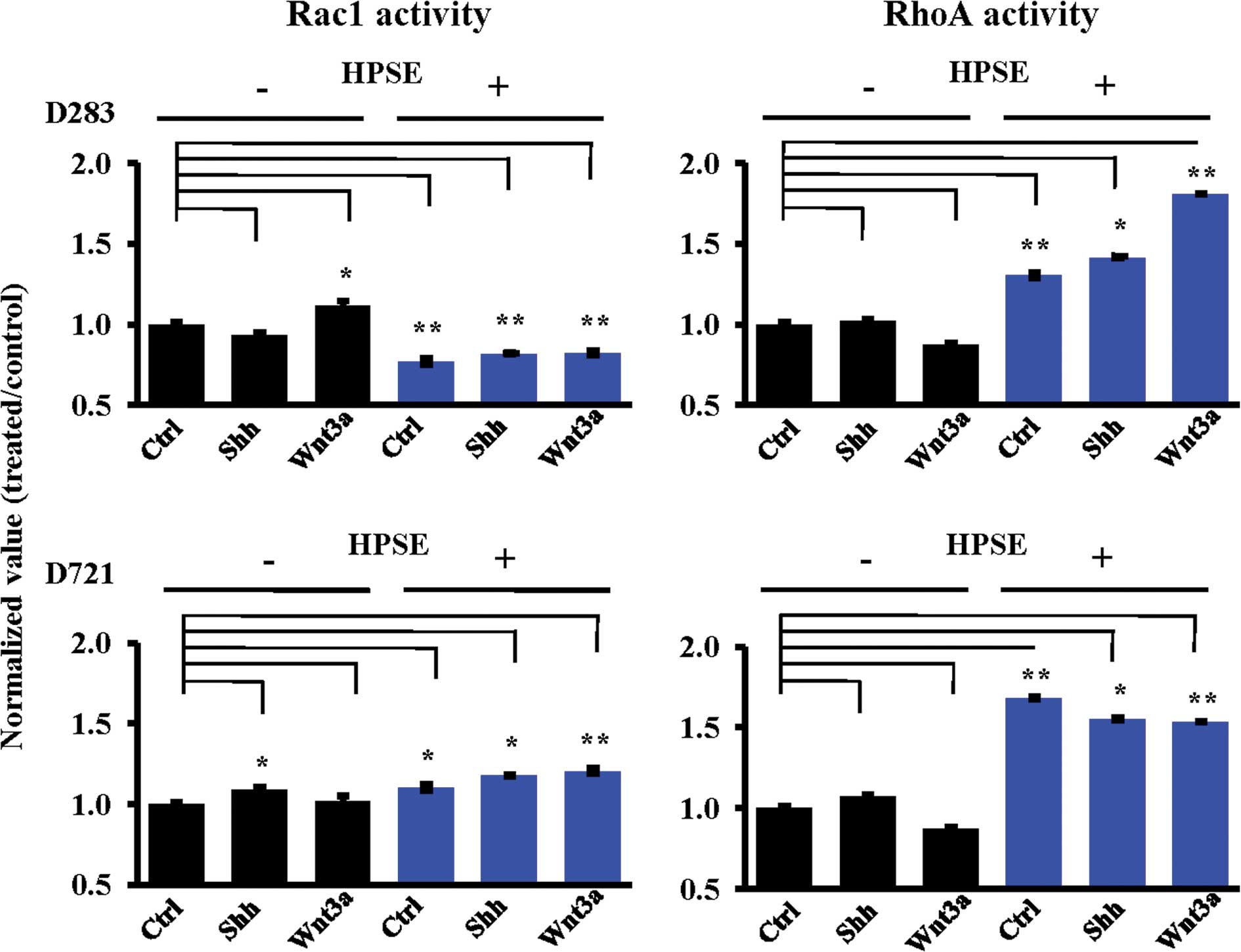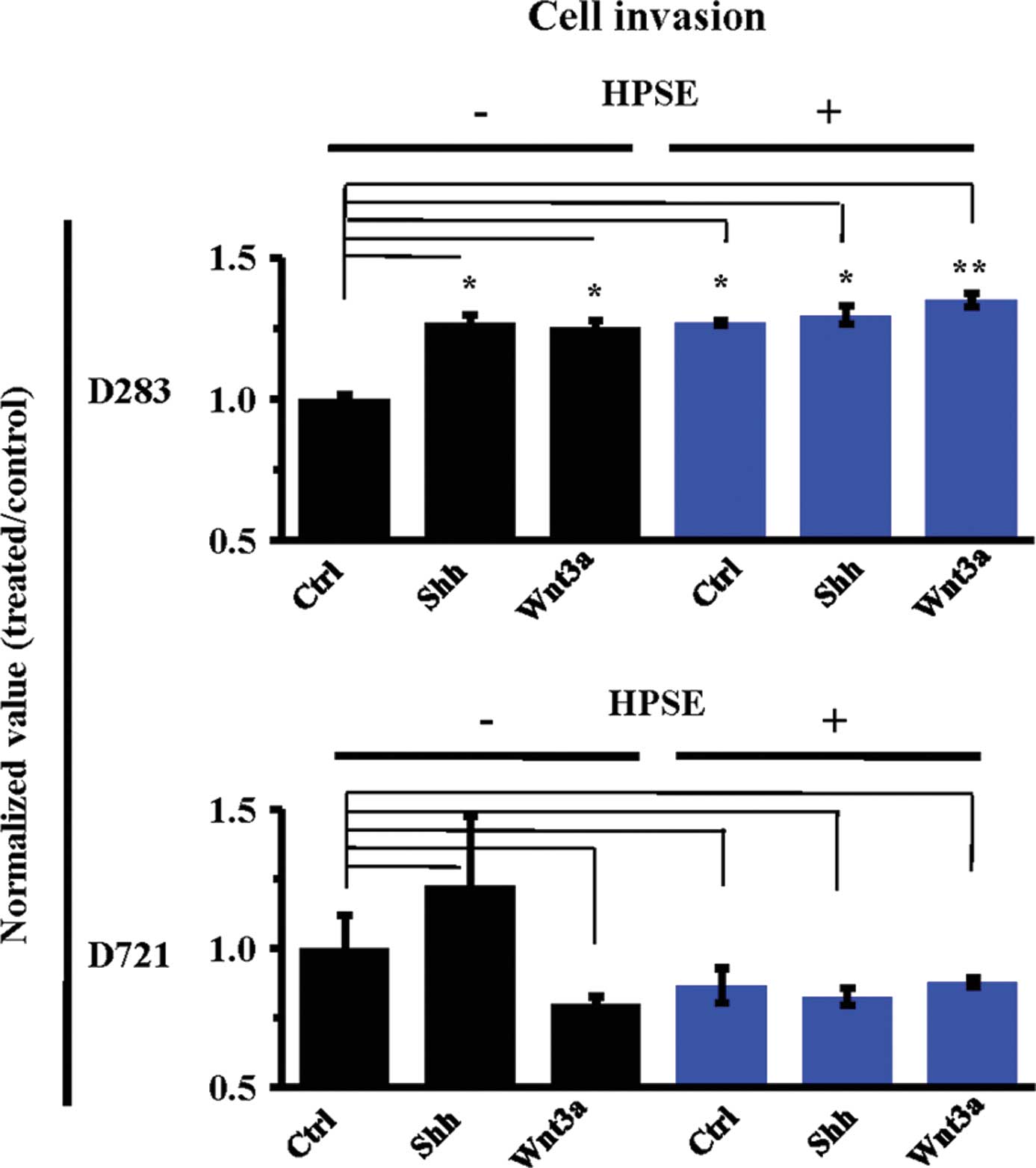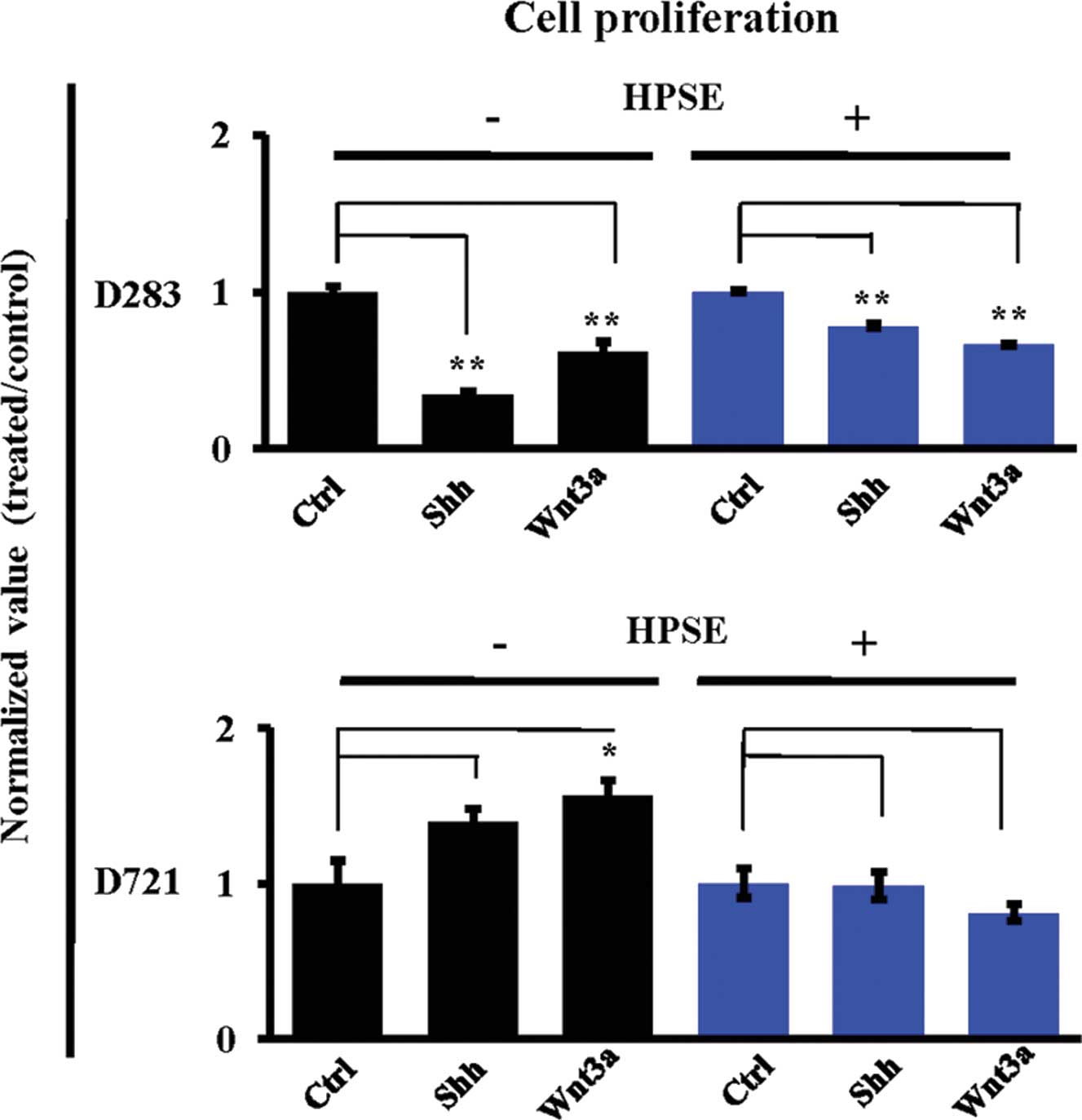|
1.
|
Guessous F, Li Y and Abounader R:
Signaling pathways in medulloblastoma. J Cell Physiol. 217:577–583.
2008. View Article : Google Scholar
|
|
2.
|
Flora A, Klisch TJ, Schuster G and Zoghbi
HY: Deletion of Atoh1 disrupts Sonic Hedgehog signaling in the
developing cerebellum and prevents medulloblastoma. Science.
326:1424–1427. 2009. View Article : Google Scholar : PubMed/NCBI
|
|
3.
|
Ribi K, Relly C, Landolt MA, Alber FD,
Boltshauser E and Grotzer MA: Outcome of medulloblastoma in
children: long-term complications and quality of life.
Neuropediatrics. 36:357–365. 2005. View Article : Google Scholar : PubMed/NCBI
|
|
4.
|
Marchetti D, Mrak RE, Paulsen DD and
Sinnappah-Kang ND: Neurotrophin receptors and heparanase: a
functional axis in human medulloblastoma invasion. J Exp Clin
Cancer Res. 26:5–23. 2007.PubMed/NCBI
|
|
5.
|
Gottardo NG and Gajjar A: Current therapy
for medulloblastoma. Curr Treat Options Neurol. 8:319–334. 2006.
View Article : Google Scholar
|
|
6.
|
Yauch RL, Dijkgraaf GJ, Alicke B, et al:
Smoothened mutation confers resistance to a hedgehog pathway
inhibitor in medulloblastoma. Science. 326:572–574. 2009.
View Article : Google Scholar : PubMed/NCBI
|
|
7.
|
Vaillant C and Monard D: SHH pathway and
cerebellar development. Cerebellum. 8:291–301. 2009. View Article : Google Scholar : PubMed/NCBI
|
|
8.
|
Cool SM and Nurcombe V: Heparan sulfate
regulation of progenitor cell fate. J Cell Biochem. 99:1040–1051.
2006. View Article : Google Scholar : PubMed/NCBI
|
|
9.
|
Rubin JB, Choi Y and Segal RA: Cerebellar
proteoglycans regulate sonic hedgehog responses during development.
Development. 129:2223–2232. 2002.PubMed/NCBI
|
|
10.
|
Mythreye K and Blobe GC: Proteoglycan
signaling co-receptors: roles in cell adhesion, migration and
invasion. Cell Signal. 21:1548–1558. 2009. View Article : Google Scholar : PubMed/NCBI
|
|
11.
|
O'Connell MP, Fiori JL, Kershner EK, et
al: Heparan sulfate proteoglycan modulation of Wnt5A signal
transduction in meta-static melanoma cells. J Biol Chem.
284:28704–28712. 2009.PubMed/NCBI
|
|
12.
|
Iozzo RV: Heparan sulfate proteoglycans:
intricate molecules with intriguing functions. J Clin Invest.
108:165–167. 2001. View Article : Google Scholar : PubMed/NCBI
|
|
13.
|
Sanderson RD and Yang Y: Syndecan-1: a
dynamic regulator of the myeloma microenvironment. Clin Exp
Metastasis. 25:149–159. 2008. View Article : Google Scholar : PubMed/NCBI
|
|
14.
|
Beauvais DM and Rapraeger AC: Syndecans in
tumor cell adhesion and signaling. Reprod Biol Endocrinol. 2:1–12.
2004. View Article : Google Scholar
|
|
15.
|
Tkachenko E, Rhodes JM and Simons M:
Syndecans: new kids on the signaling block. Circ Res. 96:488–500.
2005. View Article : Google Scholar : PubMed/NCBI
|
|
16.
|
Fux L, Ilan N, Sanderson RD and Vlodavsky
I: Heparanase: busy at the cell surface. Trends Biochem Sci.
34:511–519. 2009. View Article : Google Scholar : PubMed/NCBI
|
|
17.
|
Ilan N, Elkin M and Vlodavsky I:
Regulation, function and clinical significance of heparanase in
cancer metastasis and angiogenesis. Int J Biochem Cell Biol.
38:2018–2039. 2006. View Article : Google Scholar : PubMed/NCBI
|
|
18.
|
Goodrich LV, Milenkovic L, Higgins KM and
Scott MP: Altered neural cell fates and medulloblastoma in mouse
patched mutants. Science. 277:1109–1113. 1997. View Article : Google Scholar : PubMed/NCBI
|
|
19.
|
Berman DM, Karhadkar SS, Hallahan AR, et
al: Medulloblastoma growth inhibition by hedgehog pathway blockade.
Science. 297:1559–1561. 2002. View Article : Google Scholar : PubMed/NCBI
|
|
20.
|
Fattet S, Haberler C, Legoix P, et al:
Beta-catenin status in paediatric medulloblastomas: correlation of
immunohistochemical expression with mutational status, genetic
profiles, and clinical characteristics. J Pathol. 218:86–94. 2009.
View Article : Google Scholar
|
|
21.
|
Symons M and Segall JE: Rac and Rho
driving tumor invasion: who's at the wheel? Genome Biol. 10:1–4.
2009.PubMed/NCBI
|
|
22.
|
Sanz-Moreno V and Marshall CJ: Rho-GTPase
signaling drives melanoma cell plasticity. Cell Cycle. 8:1484–1487.
2009. View Article : Google Scholar : PubMed/NCBI
|
|
23.
|
Ilina O and Friedl P: Mechanisms of
collective cell migration at a glance. J Cell Sci. 122:3203–3208.
2009. View Article : Google Scholar : PubMed/NCBI
|
|
24.
|
Avalos AM, Valdivia AD, Munoz N, et al:
Neuronal Thy-1 induces astrocyte adhesion by engaging syndecan-4 in
a cooperative interaction with alphavbeta3 integrin that activates
PKCalpha and RhoA. J Cell Sci. 122:3462–3471. 2009. View Article : Google Scholar : PubMed/NCBI
|
|
25.
|
Sinnappah-Kang ND, Kaiser AJ, Blust BE,
Mrak RE and Marchetti D: Heparanase, TrkC and p75NTR: their
functional involvement in human medulloblastoma cell invasion. Int
J Oncol. 27:617–626. 2005.PubMed/NCBI
|
|
26.
|
Birkenfeld J, Nalbant P, Yoon SH and
Bokoch GM: Cellular functions of GEF-H1, a microtubule-regulated
Rho-GEF: is altered GEF-H1 activity a crucial determinant of
disease pathogenesis? Trends Cell Biol. 18:210–219. 2008.
View Article : Google Scholar : PubMed/NCBI
|
|
27.
|
Nardella C, Lahm A, Pallaoro M, Brunetti
M, Vannini A and Steinkuhler C: Mechanism of activation of human
heparanase investigated by protein engineering. Biochemistry.
43:1862–1873. 2004. View Article : Google Scholar : PubMed/NCBI
|
|
28.
|
Ridgway LD, Kim EY and Dryer SE: MAGI-1
interacts with Slo1 channel proteins and suppresses Slo1 expression
on the cell surface. Am J Physiol Cell Physiol. 297:C55–C65. 2009.
View Article : Google Scholar : PubMed/NCBI
|
|
29.
|
Xian X, Gopal S and Couchman JR: Syndecans
as receptors and organizers of the extracellular matrix. Cell
Tissue Res. 339:31–46. 2009. View Article : Google Scholar : PubMed/NCBI
|
|
30.
|
Alexander CM, Reichsman F, Hinkes MT, et
al: Syndecan-1 is required for Wnt-1-induced mammary tumorigenesis
in mice. Nat Genet. 25:329–332. 2000. View
Article : Google Scholar : PubMed/NCBI
|
|
31.
|
Dovas A, Yoneda A and Couchman JR:
PKCbeta-dependent activation of RhoA by syndecan-4 during focal
adhesion formation. J Cell Sci. 119:2837–2846. 2006. View Article : Google Scholar : PubMed/NCBI
|
|
32.
|
Nalbant P, Chang YC, Birkenfeld J, Chang
ZF and Bokoch GM: Guanine nucleotide exchange factor-H1 regulates
cell migration via localized activation of RhoA at the leading
edge. Mol Biol Cell. 20:4070–4082. 2009. View Article : Google Scholar : PubMed/NCBI
|
|
33.
|
Hartsock A and Nelson WJ: Adherens and
tight junctions: structure, function and connections to the actin
cytoskeleton. Biochim Biophys Acta. 1778:660–669. 2008. View Article : Google Scholar : PubMed/NCBI
|
|
34.
|
Alvarez-Medina R, Cayuso J, Okubo T,
Takada S and Marti E: Wnt canonical pathway restricts graded
Shh/Gli patterning activity through the regulation of Gli3
expression. Development. 135:237–247. 2008. View Article : Google Scholar : PubMed/NCBI
|
|
35.
|
Ruiz i Altaba A, Mas C and Stecca B: The
Gli code: an information nexus regulating cell fate, stemness and
cancer. Trends Cell Biol. 17:438–447. 2007.PubMed/NCBI
|
|
36.
|
Ridley AJ and Hall A: The small
GTP-binding protein rho regulates the assembly of focal adhesions
and actin stress fibers in response to growth factors. Cell.
70:389–399. 1992. View Article : Google Scholar : PubMed/NCBI
|
|
37.
|
Ridley AJ, Paterson HF, Johnston CL,
Diekmann D and Hall A: The small GTP-binding protein rac regulates
growth factor-induced membrane ruffling. Cell. 70:401–410. 1992.
View Article : Google Scholar : PubMed/NCBI
|
|
38.
|
Sanz-Moreno V, Gadea G, Ahn J, et al: Rac
activation and inactivation control plasticity of tumor cell
movement. Cell. 135:510–523. 2008. View Article : Google Scholar : PubMed/NCBI
|
|
39.
|
Ren Y, Li R, Zheng Y and Busch H: Cloning
and characterization of GEF-H1, a microtubule-associated guanine
nucleotide exchange factor for Rac and Rho GTPases. J Biol Chem.
273:34954–34960. 1998. View Article : Google Scholar : PubMed/NCBI
|
|
40.
|
Birkenfeld J, Nalbant P, Bohl BP, Pertz O,
Hahn KM and Bokoch GM: GEF-H1 modulates localized RhoA activation
during cytokinesis under the control of mitotic kinases. Dev Cell.
12:699–712. 2007. View Article : Google Scholar : PubMed/NCBI
|
|
41.
|
Ulloa F and Marti E: Wnt won the war:
antagonistic role of Wnt over Shh controls dorso-ventral patterning
of the vertebrate neural tube. Dev Dyn. 239:69–76. 2009.PubMed/NCBI
|
|
42.
|
Sasai K, Romer JT, Lee Y, et al: Shh
pathway activity is down-regulated in cultured medulloblastoma
cells: implications for preclinical studies. Cancer Res.
66:4215–4222. 2006. View Article : Google Scholar : PubMed/NCBI
|
|
43.
|
Ridgway LD, Wetzel MD and Marchetti D:
Modulation of GEF-H1 induced signaling by heparanase in brain
metastatic melanoma cells. J Cell Biochem. Aug;2010.(E-pub ahead of
print).
|



